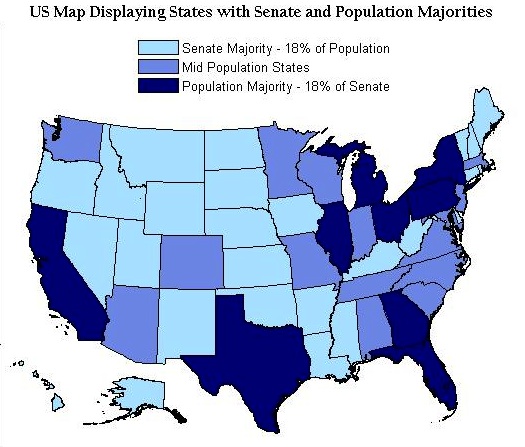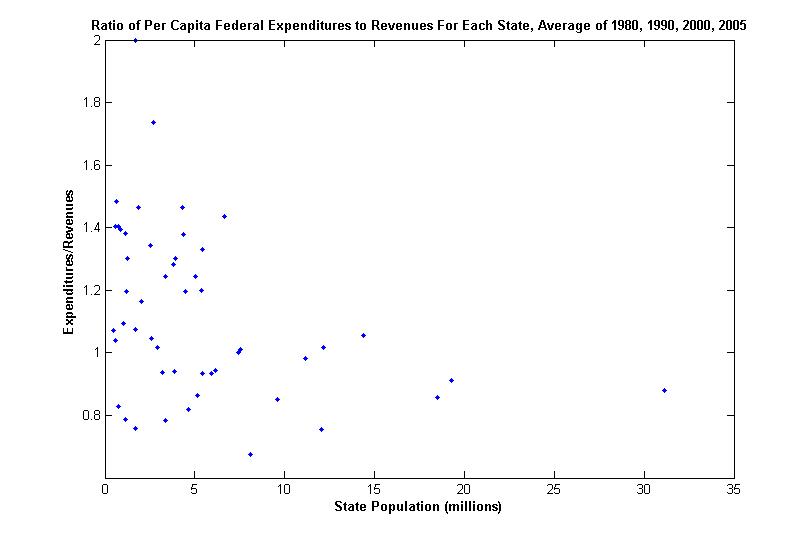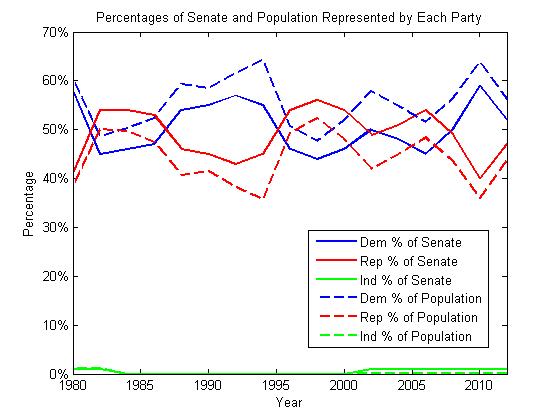Over the past five weeks, this blog has presented a variety of shortcomings of the Senate. Among these problems are unequal representation among states, marginalization of minority groups, a filibuster that is too easily invoked, a consistent bias towards one political party, and a disproportionate amount of federal funds and power received by small states. Many political observers have noticed these problems with the Senate, but the question remains of what should be done to fix them. This article will present several solutions to deal with the problems of the United States Senate. Continue reading
Category Archives: Politics and Economics
Federal Funding and Length of Service in the Senate
According to a report by the Tax Foundation, some states receive more from the federal government than they pay in taxes on a per capita basis, while others receive less. The Tax Foundation contends that the reason for this imbalance is higher incomes in some states and a progressive income tax, which accentuates the revenue differences between high and low income states. There is, however, a relationship between the ratio of federal expenditures to tax revenues and state population. States with small populations tend to receive more money from the federal government than they pay in taxes. This can be explained by the fact that each Senator has equal bargaining power, but an unequal number of constituents with whom to share federal funds and tax breaks. Furthermore, Senators from less populous states tend to have longer term lengths than their counterparts in more populous states, which allows them become the chairmen of committees and obtain even more funds from the federal government, as well as wield more power in favor of their constituents. State population, federal funding and term length are all related and serve to deliver more wealth and power to less populous states.
Republican Bias of the Senate
In posts from recent weeks, I wrote about how the Senate underrepresents citizens from populous states and minorities. However, the Senate has also consistently underrepresented Democratic voters for the past 30 years. Over the past three decades, the Senate has favored the Republican Party. Since 1980, there have been 17 sessions of Congress. Democrats have held the majority in the Senate 9 out of 17 sessions, or 52.9% of the time. However, the population represented by Democratic Senators has been greater than the population represented by the Republicans 15 out of 17 sessions, or 88.2% of the time. Democrats have been underrepresented in the Senate by between 5 – 18.5% every year since 1980. If the Senate were apportioned based on population, Democrats would have held the majority in many more sessions of Congress, which has a multitude of policy implications in areas including environmental regulation, health care, and assistance for the poor. Below are several figures that depict this state of affairs.
Revealing the Tyranny of the Minority
“Whereas the Senate in particular has become an obstructive and useless body, a menace to the liberties of the people, and an obstacle to social growth; a body, many of the Members of which are representatives neither of a State nor of its people, but solely of certain predatory combinations, and a body which, by reason of the corruption often attending the election of its Members, has furnished the gravest public scandals in the history of the nation. . . .”
-Victor Berger, from the preamble to the constitutional amendment he introduced in 1911 to abolish the Senate
In last week’s post, I wrote about how the Senate marginalizes minority groups because of the higher proportions of minorities in populous states and white majorities in almost all states. However, the Senate also empowers the minority party in the Senate beyond a reasonable measure. Senate rules dictate that any Senator can speak for an unlimited time about any topic as long as 60 other Senators do not vote to stop the speech. Advocates of the filibuster support the rule to prevent what Alexis de Tocqueville called the “tyranny of the majority.” However, because of skewed representation in the Senate, a group of Senators who represent a small fraction of the country’s population can bring Congress to a standstill and create a “tyranny of the minority” that can stop social progress. Continue reading
Effects of the US Senate on Political Representation by Race and Hispanic Origin
 Last week I demonstrated how the US Senate is unfair to voters in populous states. This week, I will examine how the Senate affects the political representation of racial minority groups. Looking at the map from last week, one can see that most of the least populous states are located in the Midwest, Mountain West, South and Northeast. What three out of four of these regions have in common is a large majority of European-Americans (a.k.a. “White people”). In fact, if you divide all of the states up into the same groups as last week, you will find that the least populous 26 states are 83.8% White, the medium population states are 80.1% White, and the nine largest states are 78.5% White. This distribution of the White population has the effect of marginalizing most minority groups by reducing their representation in the Senate. Continue reading
Last week I demonstrated how the US Senate is unfair to voters in populous states. This week, I will examine how the Senate affects the political representation of racial minority groups. Looking at the map from last week, one can see that most of the least populous states are located in the Midwest, Mountain West, South and Northeast. What three out of four of these regions have in common is a large majority of European-Americans (a.k.a. “White people”). In fact, if you divide all of the states up into the same groups as last week, you will find that the least populous 26 states are 83.8% White, the medium population states are 80.1% White, and the nine largest states are 78.5% White. This distribution of the White population has the effect of marginalizing most minority groups by reducing their representation in the Senate. Continue reading
The US Senate Needs to Go

The US Senate is one of two branches of Congress and has existed since the writing of the Constitution. However, the Senate’s rule of equal representation for each state made little sense when the Constitution was written and makes no sense now. Originally formulated by the Founding Fathers as a replicate of the British House of Lords, the Senate was meant to be run by the upper classes who would protect large property owners from democracy. Additionally, the Founding Fathers were anxious to get all 13 American colonies to join the United States and were willing to make concessions to smaller colonies to assure their membership. In the original thirteen states, the ratio between the largest and smallest populations was 11 to 1, between Virginia and Delaware. Today, California has 66 times the population of Wyoming, and the citizens of Wyoming have 66 times as much representation in the Senate.


